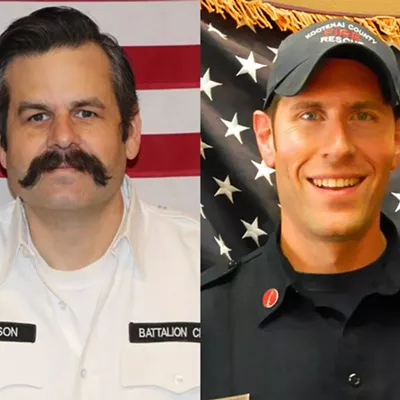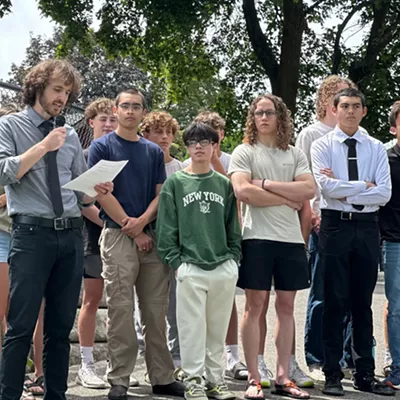Anyone familiar with only the old Al will be caught off-guard by his own self-deprecating introduction in An Inconvenient Truth: "I'm Al Gore," he says, smiling and striding on to a stage to deliver a lecture on global warming. "I used to be the next president of the United States of America."
In person, the 2006 model of Al Gore is relaxed, casual, funny, but very passionate about getting across his environmental message that nobody is going to save the world unless we do something about it ourselves. But Gore refuses to put himself at the center of what he's doing; following the ideas of Marshall McLuhan, he feels that the medium is the message.
"The images are the heart of it," he says of the photo-film-graph-chart-filled lecture. "When you see the melting glaciers and the scientific evidence, it has an impact that words alone cannot."
As presented in the film, Gore's slide show, as he likes to call it, features him roaming back and forth on a large stage, constantly punching buttons on a hand-held device that triggers a battery of projectors to flash startling graphics behind and around him. He proves to be a good storyteller, ever ready to complement those images with well researched, easily understood explanations of current and hopefully avoidable future environmental problems, from temperature increases to rising ocean levels to disasters such as Hurricane Katrina.
But the slide show we see in the film has come a long way from the ones he started doing 17 years ago.
"I used to use Kodak slides back then," says Gore. "I had a three-projector deal. It worked well, but it was unwieldy. You'd go someplace and say, 'Do you have a slide projector?' They'd say yes. 'Do you have three?' They'd say no."
After Gore left the White House, he attempted to update the slide show, with the idea of adding a dissolve unit to make the visual presentation smoother.
"But it was sort of like that movie Blast from the Past, about that family that went into a bomb shelter and came back out decades later and everything had changed," he says, laughing. "Dissolve unit? We use computers now. So Tipper said, 'OK, Mr. Information Superhighway, we have to use a computer.'"
Asked what he thought of the 2004 environmental disaster film The Day After Tomorrow, Gore first says he considers it a very interesting and entertaining movie. He adds that one of the film's central plots, the potential shutdown of the Gulf Stream, is currently being studied at the Woods Hole Oceanographic Institution.
Then he says, "When the film came out, I said, 'This is fictional, and the science is wrong, but it's not as fictional or as wrong as what the Bush White House is saying.'"
He chuckles at that remark, but a hint of frustration can be felt. "I prefer to take action," he says. "And that's one of the reasons I go around giving the slide show. All of us can take action in our personal lives to help solve this problem and support others who are doing the right thing, and build support for new policies nationally. So am I frustrated that the current administration refuses to acknowledge that we're responsible for global warming and that it's a crisis? Yeah. Sure. Same as many people."
Then he laughs again, and a smile spreads across his face, as he says, "I have begun to suspect that I have lost a little objectivity where George Bush is concerned."
Yet he still has hope, and he still believes there's a future for the Kyoto Protocol, the international initiative to reduce greenhouse gasses, which was not signed by the United States.
"It remains unlikely that this Congress, this Senate, would ever ratify Kyoto," he says. "But I think it's quite likely that either this administration, when it has a change of heart, or the next, will quickly negotiate a successor to Kyoto that has a different name. But it'll be essentially the same. And yes, we will join it. I think the odds are overwhelming. It has to happen."
Read Luke Baumgarten's review of An Inconvenient Truth in the & lt;a href="http://www.inlander.com/bigscreen/bigscreen.php" & Film section & lt;/a & .















